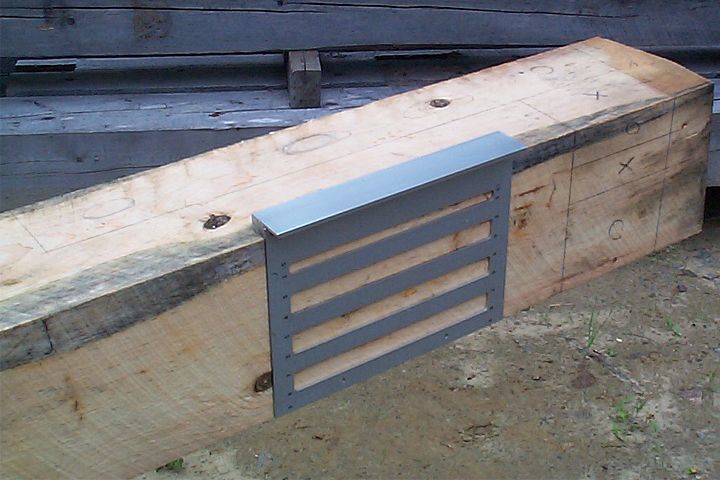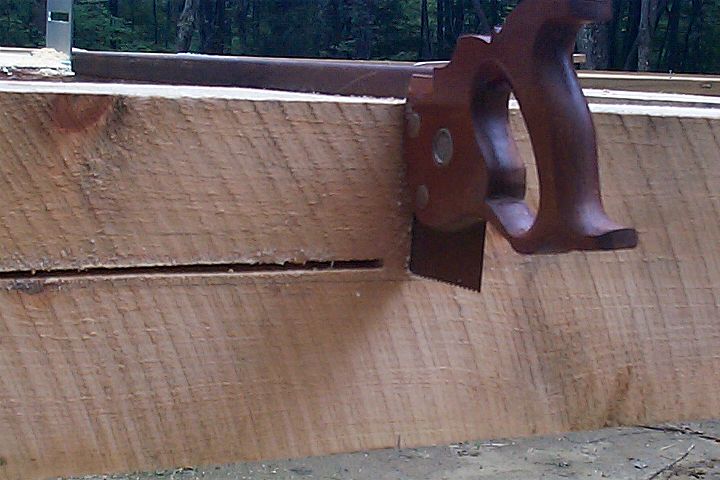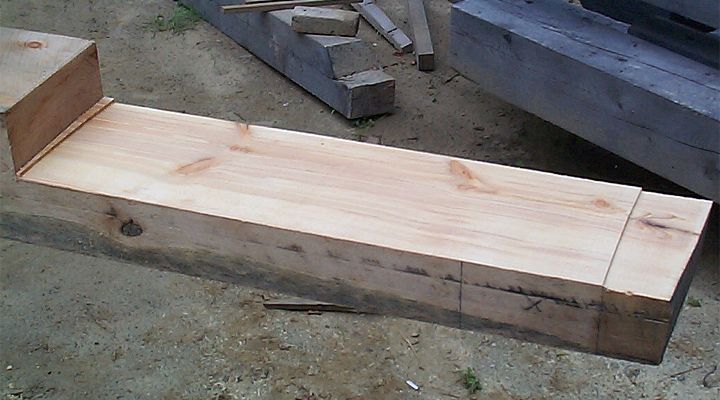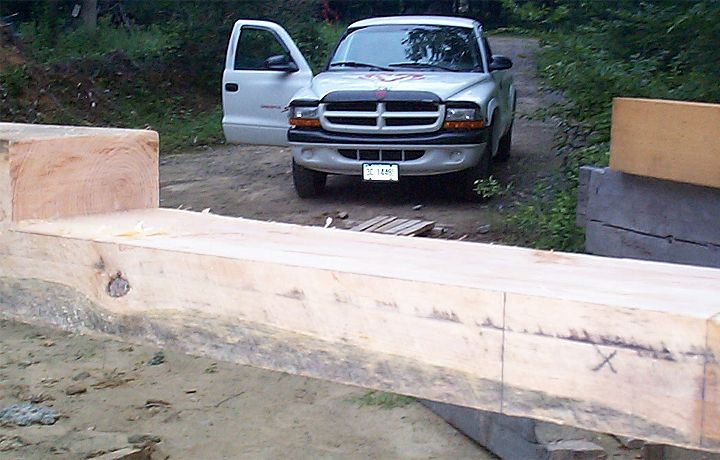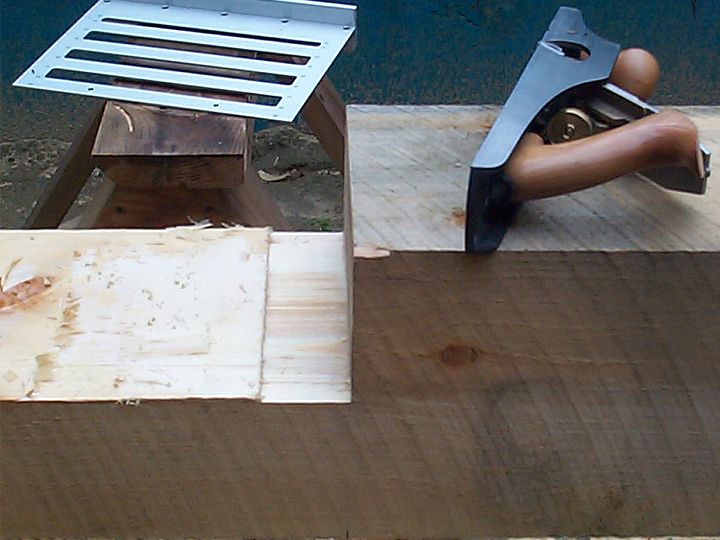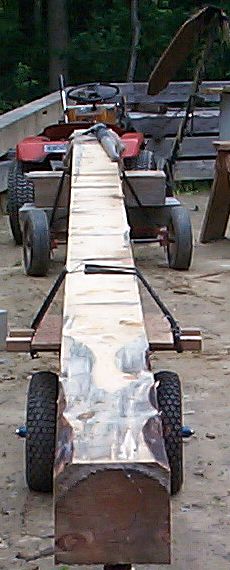 |
Here is the pine timber which will become the second half of my sill. I was going to look into milling a second hickory myself but I wound up reducing the first hickory timber to a length that required the second member to be longer than my mill, so I decided to stick with the timbers I had purchased.
The picture to the left shows the pine timber freshly arrived. Above is my solution to moving a timber solo when it weighs more than twice what I can lift. First I erect a solid column of concrete blocks under the timber just beyond the balance point then set a screw jack as close to the column as I can and still have room to turn the screw. The timber is then jacked up until the wheels of the timber cart leave the ground and the column can be capped with a nice smooth piece of pressure treated lumber.
Here is an enhanced view.
 At this point I can release the bungies holding the timber cart and get it out of the way then drop and remove the jack so that the timber is solidly on the column. Once the other end of the timber is detached from the tractor it's a very simple matter to pivot it up off the tractor and onto a waiting sawhorse. I control it from the far end with downward pressure while using the column as a pivot point. Once I'm onto sawhorses I control it by lifting the end I intend to move as added downward pressure might crush a sawhorse. When on sawhorses it's supported at roughly the 1/3 and 2/3 positions, in this position I'm lifting ~1/3 of the weight and the sawhorse holds the remaining 2/3, were I to push down to raise the far end then the sawhorse would have to hold ~4/3 of the timber's mass.
At this point I can release the bungies holding the timber cart and get it out of the way then drop and remove the jack so that the timber is solidly on the column. Once the other end of the timber is detached from the tractor it's a very simple matter to pivot it up off the tractor and onto a waiting sawhorse. I control it from the far end with downward pressure while using the column as a pivot point. Once I'm onto sawhorses I control it by lifting the end I intend to move as added downward pressure might crush a sawhorse. When on sawhorses it's supported at roughly the 1/3 and 2/3 positions, in this position I'm lifting ~1/3 of the weight and the sawhorse holds the remaining 2/3, were I to push down to raise the far end then the sawhorse would have to hold ~4/3 of the timber's mass.
|



